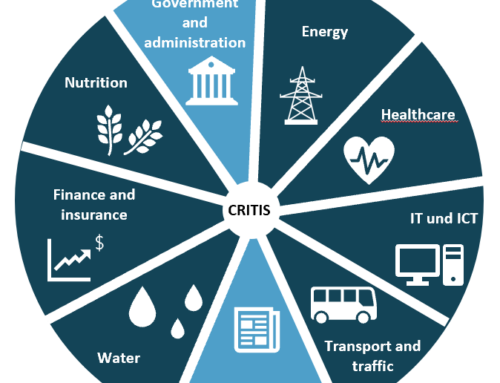The mere consideration of financially oriented risks is no longer sufficient in today’s logistics. Rather, aspects such as risk management, sustainability and social requirements are of great relevance as a result of society.
Several studies show, however, that many companies have not yet implemented risk management, nor have plans been drawn up to do so. Medium-sized companies in particular are still hesitant to consider an introduction. The company management either lacks the necessary risk awareness, or the companies regard the resulting cost factor as too high.
With regard to current challenges for supply chain management, globalization is often cited as the greatest challenge. As the world and its countries become more interconnected, supply chains are becoming more and more international. As a result, supply chains are becoming longer and more expensive and risk-prone.
The effective counteraction and the installation of safeguards in a supply chain is on the one hand of great advantage, but on the other hand also associated with increased costs (intermediate storage, additional means of transport / drivers). A proactive risk management should ensure that the fluctuation margin is reduced by the target value and that therefore fewer safeguards or buffers have to be planned, which ultimately also leads to cost savings by eliminating the need for additional funds or interim storage.
The peculiarity of risk management within a supply chain, unlike the risk management of an individual company, is that it has to be cross-company because of the many different actors involved.
Special characteristics of a SCRM can be:
- There are information asymmetries between companies with regard to risks
- Companies in a supply chain differ in terms of their willingness to take risks and their risk-bearing capacity
- Since companies in most cases are involved in several supply chains, their willingness to adapt to the standards of a supply chain is often low.
- Many supply chains operate on an international level. Here, differences in national regulatory requirements must be taken into account.
The complexity of these requirements makes it possible to understand what cross-company risk management means in terms of effort. The more companies that enter a supply chain, the more demanding the implementation becomes.
However, in order to give risk management a breeding ground, the risks relevant to the supply chain must first be identified. These include procurement, demand and capacity risks, but also transport, storage and delivery risks. There is broad agreement that the overriding goal of SCM is to optimize the flow of materials, goods and information. Consequently, all factors that have an influence on these flows are referred to as supply chain risks. A further objective of risk management is the early identification of possible risks and their prevention. The methodology for this procedure is provided by the risk management cycle, which consists of risk identification, risk assessment, risk control and risk monitoring.
The challenge of designing and controlling the entire logistics supply chain from the supplier of materials to the end consumer, assigns an important role to the transport and storage processes. Global transports run over long distances, which has an influence on transport time, handling processes and interim storage.
These forms of risks are classified as part of procurement, production and sales risks. While transport risks relate to all individual risks associated with physical transport, such as damage to goods or transport delays, storage risks address all individual risks associated with the storage of goods. These include all risks that threaten warehousing and affect the warehouse itself.
Although both storage and transport damage are caused by various factors, such as nature, self-inflicted damage or other objects in the immediate vicinity, they always relate to time and space bridging. The approaches to storage risk are graduated; from the overall consideration of storage risks, the consideration of individual storage locations and the consideration of an individual good. While the immediate financial losses incurred are often easily identifiable, the extent of damage to a supply chain is much more difficult to determine. In addition, supply chains run in a multimodal manner (use of different means of transport within a given period of time), which ensures that damage locations can often not be traced, thus creating a problem of allocation to the actors involved.
Due to globalization and other global influences, goods are increasingly exchanged internationally and globally. As a result, supply chains are becoming longer and longer in terms of time and distance, and the number of intermediate warehouses and handling and transport processes is increasing. With regard to quantity, quality, value, costs, time and location, transport and storage risks can be identified and a multitude of measures can be taken to avoid, reduce, pass on and bear the risks. However, transport and warehousing policy measures should not be viewed in isolation, as they also have an impact on other players in the supply chain through close networking.
The current challenges facing a logistics company today make close cooperation between companies and their suppliers, service providers and customers indispensable. Cooperation risks have their origin in relationship-specific problems and arise from a lack of identity, a lack of mutual trust and communication difficulties between the partners and can have a lasting negative impact on the success of a network. In order to limit these risks, active management is required that identifies risks and develops measures to effectively counteract these analysed cross-company risks.






